Iceland history
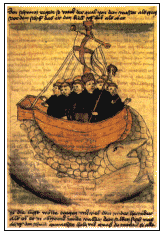
The Iceland history of Settlers
Iceland history begins when the first people came to Iceland. They were Irish monks, who probably settled there in the eight century. There is, however, no archaeological evidence of any settlement by the Irish, and only a few passages in books offer documentary evidence of their residence in Iceland. They are said to have left the country on the arrival of the pagan Norsemen, who systematically settled Iceland in the period 870-930 AD. Iceland was thus the last European country to be settled.
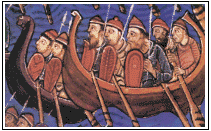
The main Sources for Iceland history
The main source of information about the settlement period in Iceland is the Book of Settlements (Landnámabák), written in the 12th century, which gives a detailed account of the first settlers. According to this book, Scandinavian sailors accidentally discovered the country. A few voyages of exploration were made soon after that and then the settlement started. Ingólfur Arnarson was said to be the first settler. He was a chieftain from Norway, arriving in Iceland with his family and dependents in 874. He built his farm in Reykjavík, the site of the present capital. During the next 60 years or so, Viking settlers from Scandinavia and also from Norse colonies in the British Isles - Ireland, Scotland and the Scottish Isles - settled in the country. There was therefore a Celtic element among the first inhabitants. The settlement of Iceland may also be viewed in the context of the general Viking expansion of the period, plausibly linked to population pressure in Scandinavia and increasing scarcity of farming land.
The Iceland history of establishment of Althingi
In the year 930, at the end of the settlement period, Althingi (legislature and judiciary) was established and a legal code was adopted. Althingi met once a year in summer to adopt laws and render verdicts. There were also four local courts and a system of regional assemblies, led by the chieftains. On the lowest level of authority there were the "hreppar", or local districts, where the farmers assembled to conduct the affairs of the community. The establishment of Althingi marks the formation of the Icelandic Commonwealth, although it had no executive power. In about the year 1022, Iceland entered into its first treaty with a foreign country when it made a agreement with King Olafur Haraldsson (St Olaf) of Norway concerning the rights of Icelanders in Norway and Norwegians in Iceland.
The Iceland history of Conversion
Christianity was peacefully adopted in Iceland at Althingi in the year 1000. The main reason for this conversion was most likely pressure from the king of Norway. The first episcopal seat was established at Skalholt in southern Iceland in 1056 by Ísleifur Gizurarson. His son and successor, Gizurr Ísleifsson, established a second bishopric at Hólar for the northern part of Iceland in 1106. The first monastery in Iceland was founded at Thingeyri in 1133. Many others followed. Both the episcopal seats and the monasteries became centres of learning and literature.
The Iceland history about Discovery of Greenland and America
Greenland was discovered and colonized by the Icelanders under the leadership of Erik the Red in the late tenth century, and in about the year 1000, Icelanders became the first Europeans to set foot on the American continent. In the early 11th century they attempted to establish a settlement in a place they called "Vínland" somewhere to the south of their bases on northern Newfoundland. In the end, their attempts to settle in the New World failed.=>> Discovery of America.
The Iceland history Saga
The 13th century in Iceland has been called the "Golden Age" of saga writing. The Iceland history include some of the classics of medieval literature, written in Icelandic, the ancient language of the Vikings Iceland that is still spoken in Iceland today. The foremost writer of medieval Iceland was Snorri Sturluson (1178 - 1241) who was a chieftain and a historian. He is the author of "Heimskringla", a Iceland history of the kings of Norway, and the "Younger Edda", a treatise on poetics and Icelandic mythology.
The Iceland history about Civil War
The period 1220-1262 is called the "Age of the Sturlungs". It was a period of civil war which led to Iceland's submission to the king of Norway in 1262. A new monarchical legal code, "Jónsbók" was accepted by Althingi, which retained its legislative powers, in 1281. When Norway, Sweden and Denmark formed the Kalmar Union in 1397, Iceland fell under the sovereignty of the Danish crown, but still retained constitutional status.
The Iceland history of English Century
The 15th century in Iceland is called the the "English Century" because it was a period of close contact between Iceland and England. The English regularly sailed to Iceland for fishing and trade. The Black Death ravaged the country between 1402 and1404. Printing was introduced into Iceland by Jon Arason, Bishop of Holar, in the 1530s, and in 1540 the New Testament was published in Icelandic. The Bible was published in Icelandic by Guðbrandur Þorláksson, Bishop of Holar, in 1584.
The Iceland history of Reformation
The Danish king brought about the Reformation of the Church in 1550 after strong opposition by the Catholics. Lutheranism became the state religion, with the Danish king as the head of the Church. The great wealth of the Catholic Church was confiscated and the last Catholic bishop (and national hero), Jón Arason, was beheaded. These events strengthened Danish royal power in Iceland. In 1602 the Danes replaced the Hansa and English trade with an oppressive Danish trade monopoly. Absolute monarchy was established in 1662, and the Danish monarchs became hereditary rulers of Iceland. The legislative powers of Althingi were greatly reduced. The transfer of all power to Copenhagen, and the trade monopoly, proved disastrous for the Icelandic economy. Further problems arose in the food supply due to cooling of the climate during the 16th and 17th centuries.
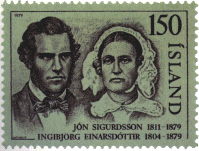
The Trade Monopoly and Natural Disasters
The Danish trade monopoly, established in 1602, was forced on Iceland. It was aimed to promote the Danish mercantile class and Danish trade. Merchants from certain towns, mercantile trade unions or companies held the trade monopoly in Iceland for certain periods, often after competitive bidding. The trade monopoly caused havoc in the economy.The 18th century was the most tragic period in Iceland history, due to a series of famines and natural disasters. There were three sharp reductions in the population as a result of epidemics and famines. Althingi was dissolved at the end of the 18th century and the old episcopal seats in Skalholt and Holar were abolished, with a single bishop over the whole country residing in Reykjavik. As a consequence of the plight of the populace the trade monopoly was modified in 1787 and all subjects of the Danish king were given the right to trade in Iceland. In 1845 Althingi was re-established as a consultative assembly.
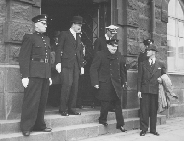
Foreign trade was liberalised entirely in 1855. In 1874, when Iceland celebrated the millennial anniversary of the arrival of the first settlers, it obtained its own constitution and control of its finances. Home rule was established in 1904. The first Icelandic government minister was appointed with residence in Iceland and with responsibilities towards Althingi. Iceland finally became independent in 1918. The Kingdom of Iceland shared the same monarch with Denmark. Under a special agreement, Denmark administered Iceland's foreign affairs and operated the coast guard, as decided by Iceland. This arrangement came to an end on 10 April 1940, after Denmark was occupied by Germany. On 10 May 1940, British forces occupied Iceland. On 17 June 1944, the Republic of Iceland was formally proclaimed at Thingvellir. Jón Sigurðsson, a national hero in the struggle for Iceland's independence and his wife, Ingibjörg Einarsdóttir
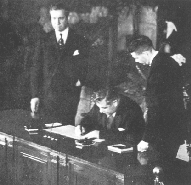
Modern Times
Iceland was initially a neutral state during the Second World War. In 1940 it was occupied by British forces and in 1941, by invitation from the Icelandic Government, US troops replaced the British. This event took place five months before the US formally entered the Second World War after the attack on Pearl Harbour. Icelandic ships suffered many casualties during the war and many Icelandic lives were lost. The US forces remained in Iceland until the end of the war. Iceland became a founding Member of NATO in 1949. Two years later Iceland entered into a bilateral Defence Agreement with United States. US troops returned to Iceland and remain at the Keflavik Naval Air Station.
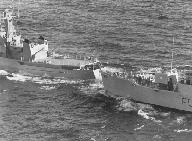
Iceland expanded its fisheries jurisdiction from 3 to 4 miles in 1952 and to 12 miles in 1958, which lead to the first "Cod War" with the United Kingdom. Two others "Cod Wars" were to follow with United Kingdom when Iceland extended its fishing limits in 1972 to 50 miles and 1975 to 200 miles.
Iceland joined the United Nations in 1946 and in 1948 became a founding member of the OEEC (later OECD). It joined the GATT in 1964 and in 1970 Iceland joined the European Free Trade Association (EFTA). It was a founding member of the European Economic Area (EEA), which came into effect in 1994, including the EFTA countries (except Switzerland) and the European Union. Bjarni Benediktsson, Minister for Foreign Affairs,signs the NATO charter in 1949. Source: NATO
Iceland history





